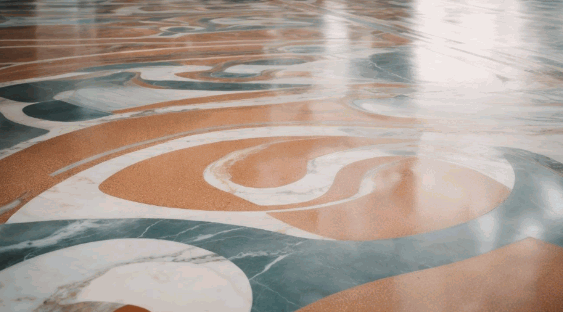
Epoxy flooring has gained popularity in recent years for its durability, easy maintenance, and versatility. Businesses and homeowners alike are turning to epoxy floors for their cost-effective and long-lasting benefits.
In addition to its practical advantages, epoxy floors also offer the opportunity to mimic the luxurious look of marble. With the right techniques and materials, you can transform your epoxy floor into a stunning marble-like surface.
In this article, we will explore the step-by-step process of creating a marble effect with epoxy, as well as the important considerations to keep in mind before attempting this project. Whether you're a DIY enthusiast or a professional contractor, understanding the intricacies of achieving a marble look with epoxy flooring is essential for a successful and visually striking result. So, let's delve into the world of epoxy floors and discover how you can elevate your space with a stunning marble-like finish.
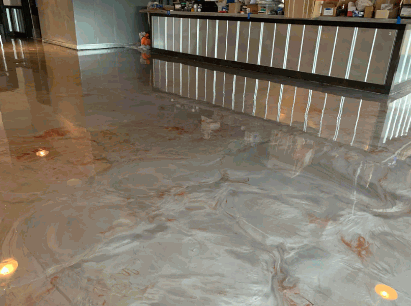
Table of Contents
An epoxy floor is a durable, glossy, and smooth flooring solution often used to replicate the luxurious appearance of marble through DIY techniques, utilizing epoxy resin to create a professional finish.
This type of flooring is known for its exceptional durability, making it ideal for high-traffic areas like garages, kitchens, and industrial spaces. Its glossy finish not only adds a sleek and modern aesthetic to the floors but also enhances light reflection, brightening up the space. The smooth texture of epoxy floors makes them easy to clean and maintain, and when properly applied, the resin can mimic the elegant look of marble at a fraction of the cost.
DIY enthusiasts can take advantage of epoxy kits and tutorials to achieve stunning faux marble effects, elevating the visual appeal of their living spaces.
Explore: What Is Resin Floor
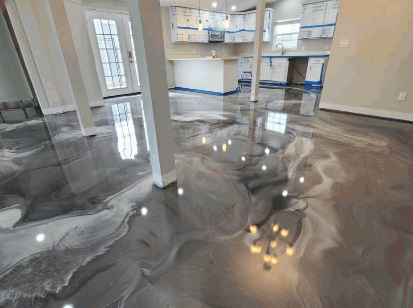
Epoxy floors offer numerous benefits, including exceptional durability, easy maintenance, versatile design options, and cost-effective solutions for enhancing interior spaces.
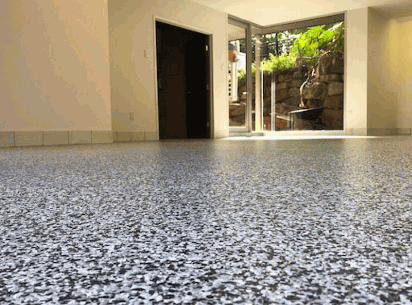
The durability of epoxy floors makes them a practical and long-lasting choice for both residential and commercial spaces, providing a realistic and cost-effective alternative to traditional flooring materials.
They are highly resistant to stains, chemicals, and scratches, making them ideal for high-traffic areas. Epoxy floors require minimal maintenance, as they can be easily cleaned with a simple mop and mild detergent. The seamless finish also eliminates grout lines and joints, creating a smooth and hygienic surface that is perfect for commercial kitchens, warehouses, and even garage floors.
The range of colors and finishes available allows for customization, enhancing the aesthetics of any space while offering superior durability and practicality.
Epoxy floors are renowned for their easy maintenance, requiring minimal upkeep to preserve their professional finish, making them a preferred choice for homeowners and experts alike.
The smooth, seamless finish of epoxy flooring not only enhances the aesthetic appeal of any space but also simplifies the cleaning process. Its resistance to stains, chemicals, and wear and tear adds to its allure, making it a durable and cost-effective option. Whether in residential garages, commercial settings, or industrial facilities, epoxy floors offer a level of sophistication and functionality that is unmatched by traditional flooring alternatives.
The hassle-free maintenance and sleek appearance make epoxy flooring a valuable investment for long-term satisfaction.
The versatility of epoxy floors allows for creative design options, including color blending, swirling, and veining techniques, offering a customizable and visually stunning transformation for interior spaces.
These techniques enable the creation of seamless, flowing designs that simulate the look of natural stone or swirling patterns, adding depth and texture to the floor. Color blending allows for the incorporation of multiple hues, creating a unique, customized appearance. Veining techniques can emulate the elegance of marble or granite, while swirls can evoke a sense of movement and energy, making epoxy flooring a popular choice for both residential and commercial settings.
Epoxy flooring presents a cost-effective solution for transforming interior spaces, making it an attractive option for enhancing the aesthetic appeal and value of residential and commercial properties through home improvement projects.
Its seamless, glossy finish not only adds a sleek and modern touch to any space but also offers durability and low maintenance, making it a practical choice for high-traffic areas.
Epoxy flooring can be customized with a wide variety of colors and patterns, allowing homeowners and business owners to create unique and personalized designs that reflect their individual styles. This versatility makes it a popular choice for those looking to revamp their interiors without breaking the bank.
Achieving a marble-like appearance with epoxy flooring involves a series of DIY techniques using epoxy resin, pigments, and specialized processes such as swirls, veining, and color blending to create a professional finish with a glossy and smooth texture.
This project can be accomplished by following a
Before embarking on the process of creating a marble-like epoxy floor, thorough preparation is essential, involving the gathering of necessary tools, supplies, and understanding of application techniques to ensure a successful outcome.
This critical phase of preparation sets the foundation for the entire project. It begins with the collection of essential tools such as a drill with mixing attachment, squeegee, paint roller, and detail brushes. The supplies include epoxy primer, metallic epoxy resin, protective gloves, and safety goggles.
Understanding the proper application techniques like surface preparation, mixing the epoxy, and creating the marble effect is crucial for achieving the desired elegant and durable finish.
The process of achieving a marble effect with epoxy flooring involves the meticulous mixing of epoxy resin and metallic pigment, incorporating color blending techniques to create captivating patterns and visual depth.
This process requires careful attention to the proportion of epoxy resin and metallic pigment for achieving the desired consistency and color intensity. By skillfully blending different metallic pigments, such as silver, gold, or copper, the epoxy mixture can mimic the intricate veins and natural variations found in marble.
The application technique plays a crucial role, as controlled movements and layering help to recreate the distinct veining and organic patterns characteristic of marble surfaces.
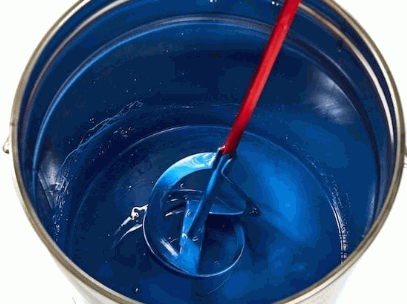
Applying the base coat is a crucial step in the process of creating a marble-like epoxy floor, requiring precise techniques and attention to achieve a smooth, glossy finish as the foundation for subsequent design elements.
This initial layer not only provides a solid base for the intricate marble effect but also acts as a protective barrier for the concrete underneath. Proper application involves meticulously cleaning and preparing the surface to ensure optimal adhesion. The base coat sets the stage for the layering of colors and textures that will emulate the natural beauty of marble. A flawless base coat application is fundamental in guaranteeing the durability and aesthetic appeal of the final epoxy floor.
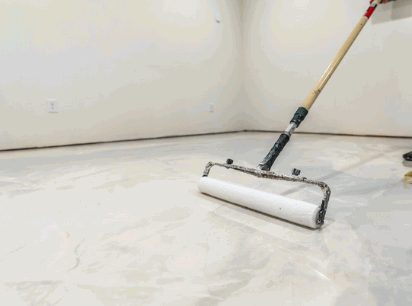
Incorporating veins and intricate patterns into the epoxy flooring design involves specific techniques and a meticulous process to achieve a realistic and visually stunning marble effect within the overall layout.
By carefully blending different shades of epoxy and strategically placing contrasting veins, such as white or grey, one can create the illusion of natural marble. Design considerations, such as the size and placement of the veins, play a crucial role in mimicking the organic flow of marble patterns.
Techniques like hand swirling or using specialized tools for precise line work contribute to the intricate details that bring the design to life. The end result is a flooring surface that not only boasts a marble-like appearance but also adds a touch of elegance and sophistication to the space.
The sealing and finishing of a marble-like epoxy floor are critical steps in ensuring long-lasting durability, applying specialized techniques and finishes to maintain the overall aesthetic appeal and ease of maintenance.
It is essential to understand the significance of these steps in protecting the floor surface against wear, stains, and chemical damage. Proper sealing not only enhances the visual appeal of the floor but also creates a protective barrier against moisture and spills. The finishing process adds a layer of resilience, making the floor more resistant to scratches and abrasions.
When executed with precision, these techniques contribute to the long-term durability and performance of the marble-like epoxy floor, extending its lifespan and minimizing the need for frequent maintenance.
Before embarking on the process of creating a marble-like epoxy floor, several crucial considerations such as surface preparation, quality of materials, necessary tools, and safety measures must be carefully evaluated to ensure a successful and safe transformation.
Evaluating the surface is essential, ensuring it is clean, smooth, and free from any defects, as this greatly impacts the application and durability of the epoxy. Assessing the quality of materials, such as epoxy resin and pigments, is vital to achieve the desired marble-like effect. Having the necessary tools like squeegees, rollers, and mixing equipment, as well as the skills to use them effectively, are crucial for the application process. Prioritizing safety measures by using gloves, and protective eyewear, and ensuring proper ventilation is also paramount in creating a safe environment while working with epoxy.
Thorough surface preparation is imperative before attempting to create a marble-like epoxy floor, involving the assessment of quality, selection of suitable materials, and the utilization of proper tools and techniques to ensure optimal results.
This process of preparation sets the foundation for the entire epoxy application, as it ensures that the surface is clean, smooth, and free from debris, which is essential for achieving the desired marble-like appearance.
Quality assessment involves inspecting the surface for any imperfections or irregularities, while the selection of materials must consider compatibility with the epoxy and the specific design requirements. The tools and techniques used should be suitable for the surface type and ensure even application and proper adhesion of the epoxy.
The quality of epoxy and pigment materials directly influences the durability and realistic appearance of a marble-like epoxy floor, underscoring the importance of using high-quality components for a successful transformation.
These high-quality materials not only ensure the longevity and strength of the epoxy floor but also contribute to its authentic marble-like finish. Utilizing top-grade epoxy and pigment materials can result in a seamless and beautifully polished surface, replicating the natural veining and depth of real marble.
The utilization of premium components enhances the overall transformation, elevating the aesthetic appeal of the space and creating a stunning visual impact.
Executing the techniques required to create a marble-like epoxy floor demands a certain level of skill and experience, underscoring the value of professional tips, tricks, and guidance for achieving optimal results.
This level of expertise enables artisans to manipulate the epoxy seamlessly, creating stunning patterns and veining that mimic natural marble. Professionals recommend focusing on the blending process to ensure smooth transitions between colors, adding depth and dimension to the surface. Experience plays a key role in mastering the use of specialized tools such as trowels and squeegees to achieve the desired effects while maintaining precision and control throughout the application.
Prioritizing safety measures during the application and maintenance of a marble-like epoxy floor is essential, encompassing the use of appropriate techniques, materials, supplies, and tools to ensure a secure and hazard-free process.
This involves conducting a thorough risk assessment before commencing the project, ensuring proper ventilation to minimize exposure to fumes, and wearing suitable protective gear such as gloves, goggles, and respirators. It's crucial to follow manufacturer guidelines for the epoxy application, including proper mixing ratios and application procedures. Regular maintenance should also be carried out with caution, using non-toxic cleaners and techniques to avoid any potential hazards. By adhering to these safety protocols, the process can be both effective and safe.